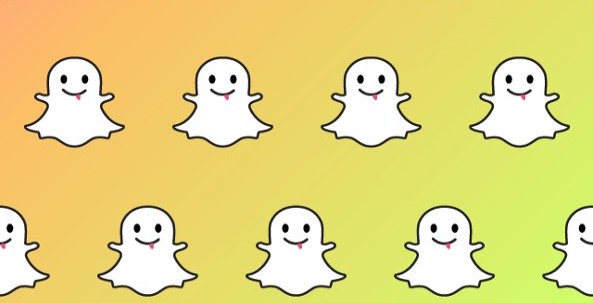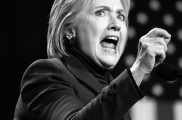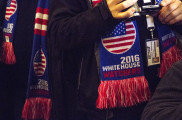Snapchat and voters find common ground

Dispatches from the campaign trail: Media is (always) changing
Twice the number of 18- to 24-year-olds watched the first presidential debate on Snapchat rather than on TV. Wait, what?
There’s something I need to come clean about. I’m a bit of late adopter when it comes to Snapchat. Forgive me. I started college before Youtube and Twitter were invented. (I’m not saying I’m old; it’s just for full disclosure). So, that so many would watch a debate that way, or that 100 million people use Snapchat everyday, is mind-boggling to me.
Every person I’ve talked to over 50 has never heard of Snapchat. Most of the people I’ve talked to over 30, if they’ve even heard of it, thought that Snapchat was something people used to share Anthony Weiner-esque photography.
Snapchat’s own numbers kind of bear this out, showing that 86 percent of users are under 35. More than 60 percent of 13- to 34-year-old smartphone users in the U.S. are Snapchat users. So basically, the only 74-year- old on Snapchat is running for president.
Campaigns have historically struggled to turn out young voters, so they have feverishly flocked to anything that can help them with their “youth” problem, Snapchat or otherwise.
A survey conducted by the Global Strategy Group found that two-thirds of millennials on Snapchat are likely to vote in 2016, higher than the percentage of millennials who don’t use Snapchat.
Not only is Snapchat changing the way young people communicate and get their news, but it’s also bringing a new dimension to the campaign trail. Is it changing the campaign trail? Before I answer that, let me get everyone up to speed.
Snapchat enters the mainstream
When the White House is on Snapchat (it joined last month), you know the app has entered the mainstream.
Almost every candidate in the race is on Snapchat. However, like every “next big thing,” most politicians aren’t particularly adept at using it right away. If you follow the candidates on Snapchat, you’ll begin to see a lot of the same things.
Candidate at a fire department or small business. Candidate walking on to a “full crowd” and boisterous applause. Wherever they are, whatever size the room, their campaigns want to show people that the place is packed.
You’ll also be sure to get two-thirds of an idea, with campaigns struggling to effectively grasp the 10-second capacity to deliver a message.
On the other hand, it’s clear to see why young people appreciate Snapchat’s presence out on the campaign trail. Perhaps more than any platform, Snapchat offers a real, behind the scenes look at the campaign trail. It brings you backstage with Hillary Clinton as Bill introduces her. It brings you onto Jeb Bush’s or Chris Christie’s campaign bus. It brings you to debate prep with Ted Cruz or to Marco Rubio preparing for an interview with Sean Hannity.
More than any other platform before, it shows voters just how tirelessly candidates commit themselves to the campaign and to their supporters.
Throughout this campaign, you can already see the evolution of Snapchat as candidates are thinking more strategically about what role it plays in their messaging.
Bernie Sanders has come a long way from his comment, “What is this Snapshot thing, and why do I only get 10 seconds?” The day of the Iowa caucuses, his campaign focused immensely on engaging Hispanic voters. His stream featured DREAMers supporting his campaign, and several Spanish-language snaps of supporters declaring their support for him, and explaining how to caucus for him. Sanders also uses Snapchat to show massive crowds and overflow rooms, perhaps to demonstrate the so-called enthusiasm gap.
At the same time, Hillary has worked to display the excitement of her supporters, and showcase the diversity and youth of her audience. And a lot of Chelsea and Bill. There are also the moments that might exemplify the Clinton campaign more than anything else, the specially designed graphics that look as if they’ve been carefully passed through layers of approval.
The Cruz campaign has used its account not only to show the campaign staff playing foosball, but also to deliver a zinger, calling out The Donald for bailing on the last debate before the Iowa caucus.
Ads by another name
When campaigns realized the power Snapchat had to reach young voters, the onslaught of ads was inevitable. However, Snapchat places limitations on what campaigns can do. It’s not as easy to bombard voters as it is on TV.
One method campaigns are using is Geofilters, which are overlays or frames that users can place over their snaps. These graphics are only available in certain locations, so only users in New Hampshire will be able to access the primary-specific filters there. Many of these geofilters simply include a town’s name. When on campus at American University, there are a few options to include on snaps.
Ted Cruz purchased a geofilter for fans to use around the Iowa-Iowa State football game this past fall, as well as for other football games in targeted Southern states.
Perhaps the best dimension Snapchat has brought to this campaign has been the campaign-sponsored geofilters of their candidate in adorable cartoon form. Just take a look at cartoon Bernie Sanders!
“Ten percent of my cartoon form is cuter than 99 percent of others out there!” – Cartoon Bernie
“I have eternal faith in the cuteness of my cartoon self.” – Dr. Carson Cartoon
A Snapchat Live Story is a compilation of pictures and videos generated by users at a specific event, like the NFL Pro Bowl or X-Games, or in a geographic area. A stream, carefully curated by the good people at Snapchat, is published for users to watch for one day.
New Hampshire will have a livestory for users to follow along with what candidates and users following the campaign. AU students on the ground will have content stitched into the New Hampshire story stream, so follow along!
Snapchat also offers more traditional ads in 10-second bytes that can be embedded within these one-day stories. Campaigns have taken advantage of livestory ads that have fewer frills than TV ads, and at the very least, are over quickly. John Kasich was the first to place an ad of the campaign cycle, and Ted Cruz and Rand Paul joined him shortly after. Kasich was an early adopter because he has college-aged twin daughters to show him the ropes.
With event-specific and regional live stories, Snapchat isn’t exactly competing with network news. It doesn’t need to fill the 24-hour news cycle that cable news and even Twitter sometimes feverishly chase. They are in a position to simply release news when there’s news.
In this way, Snapchat could have the potential to bring some semblance of sanity to easy-access news, and has already brought young voters along for the ride. The biggest, lasting impact could come should Snapchat use push notifications, as Facebook has in the past, to remind and mobilize young voters on election day, or during primary elections in their state. This would be particularly powerful in primaries with same-day registration.







Comments are closed.